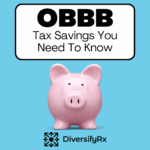Can you dramatically improve your pharmacy’s profits in just 90 days?
It is the start of a new quarter today. Are you happy with what you accomplished in the last quarter? Did you have ideas and plans, and then they got lost in the shuffle of the day-to-day of running your pharmacy? Most pharmacy owners I speak with are not satisfied with how much the needle moved in the last quarter. Let’s correct that today!
You can dramatically increase your pharmacy profits by getting just 3 key performance indicators (KPIs) in the green. These most critical pharmacy KPIs are the foundation for a wildly successful pharmacy. If you don’t get control of these KPIs, you will be a hamster on a wheel. Working your ass off and getting nowhere.
Track, Measure, Monitor, And Report On Your Pharmacy’s Metrics
KPIs focus on strategic and operational metrics to create a basis for decision making and help you know precisely what needs focused attention. To make the most out of your pharmacy’s numbers, you will want to calculate your KPIs and compare them to accepted benchmarks. For an even bigger boost of motivation and accountability, make your process of tracking and reporting your metrics public. Now, this doesn’t mean posting for the world to see, but instead, think about sharing your goals with your staff, professional friends, other owners, or trusted mentors. I believe sharing with your employees is critical as their actions will have an immense impact on your success in improving your metrics.
Implementing a system for KPIs in your pharmacy is an absolute must. Because I’m a self-proclaimed nerd, I’ve got over 100 pharmacy KPIs, however managing 100 is a bit unrealistic, even for me! You need data to make the best decisions for your pharmacy. The following 3 KPIs are the ones to focus on first. I know it is so hard to say no to the uber-sexy shiny object over there… but if you don’t have your foundation in order, nothing else you do will make a significant impact as you will be leaking money soon as you make it.
The First 3 Critical Pharmacy KPIs To Focus On
Here are the first 3 KPIs you should get to “green” as quickly as possible. I recommend you work on them in this exact order.
- Payroll Ratio
- Inventory Turns
- Expense Ratio
Now let’s dive into each of these. If you were wondering how to keep up with your KPI ratios, I’ll show you how to use my KPI Worksheet at the end of this post. The benchmarks in this article are for regular retail pharmacies. If you are a hybrid, compounding, or LTC – you can get common benchmarks HERE.
KPI #1: Payroll Ratio
To Calculate: Total Payroll Costs ÷ Total Revenue for same period = Payroll Ratio (multiply by 100 to get a percentage)
Benchmark: Red > 14% Yellow 13-14% Green <13%
You need staff to keep your pharmacy running, of course, but you shouldn’t let payroll expenses get bloated as that will put a tight strain on your entire pharmacy.
Payroll expenses include everything associated with paying employees (and maybe yourself). This includes salaries, bonuses, taxes, benefits, and insurance for all revenue-generating employees. The most common question I get is should the owner’s compensation be included in the calculation. The answer is it depends. Is the owner working in the pharmacy helping to dispense medications? If so, then yes. What if the owner is over or under-compensated compared to the market rate for the role they are doing? Here is an example.
If you are an owner in a pharmacist’s role and a pharmacist market rate is $90k in your area, here is how it might play out. If you take distributions of $200k, you would NOT include the $200,000. Instead, only use $90,000 in the KPI calculation. But if you underpay yourself, say at $50,000, then to evaluate your KPI accurately, you would need to bump it up to market rate. Some owners don’t pay themselves at all and yet work full-time as the dispensing pharmacist. In cases like that, a market-rate number would have to be used rather than zero to accurately measure this KPI.
Clear as mud?? If you are unsure, that is why DiversifyRx is here. Just reach out, and we can help you get your calculation right.
What To Do If Your Ratio Is Too High?
Your payroll ratio is a math problem. You fix it by lowering your payroll amount or increasing your revenues. There are many ways to decrease your payroll expenses. A few examples are:
- letting someone go
- hiring an intern rather than a pharmacist
- adjusting pay
- optimize employees’ schedules and reduce overall hours
It is much more fun to increase revenues, and some of the quickest ways to do that are to sell profitable supplements. If you are genuinely over hours, then I prefer to make cuts across the board, so everyone is affected a little rather than one or two affected a lot. Considerable savings can come from everyone giving up 1-3 hours a week. Explain to your employees that you need to balance payroll with revenues, and if they can increase revenues, then hours can remain high, but if revenues are going to be down for the long term, you need to adjust payroll accordingly.
KPI #2: Inventory Turns
To Calculate: Inventory Turns = Annualized Cost of Goods Sold* ÷ Current Inventory Value
*You can also take your COGS for the past month, then multiply by 12
Benchmark: Above 20
You’ve probably heard me mention before that a fat inventory equals a skinny wallet, so if you’re having cash flow issues, my bet is your inventory is probably too high for your revenue level. Inventory is a massive drain on cash and must be managed correctly to be successful. As you’re going through the inventory exercise, don’t be afraid to ask for help, especially from your accountant. They can also help you calculate this number monthly.
Gone are the days of a 12-turn target. Because of declining profits and tight cash flow, pharmacy inventory levels should at least be maintained at 20 turns – the best performing pharmacies are turning in the mid 20’s and 30’s.
If you’re under 20 turns, rethink your inventory management to make buying strategic and more effective, helping your cash flow. Too much product on the shelves? Do an inventory cleanup to return eligible items to the wholesalers. Do you have too many expired products? Then return to a reverse distributor to get a credit. I think the best on the market is Flash Returns. Daily consistent inventory is the way to win this race. Make sure your daily order is below your daily COGS to prevent your inventory from getting bloated again.
KPI #3: Expense Ratio
To Calculate: Operating Expense Ratio = Total Operating Expenses ÷ Total Revenues
Benchmark: Less than 19%
An expense ratio examines your pharmacy’s expenses related to your revenue and can tell you how efficiently your pharmacy operations are managed. The lower your operating expenses, the higher your profits can be!
Expenses include inventory, rent, payroll, building maintenance, operations, marketing, taxes, and the list goes on. Everything that you spend money on. Expenses can quickly get out of control, so keeping a close eye on them can give you the extra assurance you need to sleep soundly at night.
Not long ago, being in the 20% expense ratio range was acceptable, but with DIR fees and lower reimbursements, today’s ideal expense ratio is less than 19%. Basically, the lower your expense ratio, the more positive its impact on your pharmacy’s cash flow.
To stay on top of expenses and how they relate to revenue, meet with your accountant regularly to review your P&L statements (profit and loss). Keep track of business expenses diligently and find ways to lower your operating costs while maintaining or increasing sales. One of my most favorite ways is very unsexy. Save on your ink and toner with PSA.
KPI Worksheet
This nifty worksheet tracks and measures each of the Top 7 Pharmacy KPIs. It helps remove the guesswork and provides all your ratios in one place. Simply plug in your numbers each month to get your financial results.
















